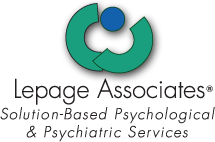Anyone who has spent time in nature knows how peaceful and calming it is. Even if you don’t consider yourself an outdoorsy person and prefer living or vacationing in a city, you surely have come across a park and have enjoyed sitting on a bench admiring the landscaped flowers and trees. What is it about natural environments that make it so good for our mental health? Why are spiritual and health retreats typically held in the mountains, by an ocean, or deep in a forest? Psychologists call it Attention Restoration Theory (ART). The theory says that we have two attentional systems. The first type of attention allows us to have intense prolonged focus where we can ignore distractions long enough to solve a problem at work or to study for an exam. This type of attention is prone to mental fatigue – anyone who has studied for a big exam or needed to meet a deadline for a work project knows this mental fatigue! The second attentional system does not require such intense focus, but rather involves effortless reflection and observation. ART says that it is this second attentional system that gets activated when in nature, and which allows for recovery from mental fatigue. Mountains, oceans, lakes, streams, and forests demand very little from us, yet they still engage us in a way that does not drain our energy. Unlike cities and social media which are constantly vying for our attention to “look here! look there!” and “pay attention to this before it becomes irrelevant!” – nature allows us to pay attention in our own time. When in nature, we can think as much or as little as we’d like.
Our ancestors used to spend the majority of their lives outside and it’s only relatively recent in our evolution that we spend so much time indoors. The average American now spends 93 percent of their life inside (this includes time spent in a vehicle). It’s no wonder our alienation from nature has coincided with higher rates of illness, attention difficulties, and has diminished use of our senses (living on autopilot).
The Japanese culture has something called Shinrin-yoku, which translates to “forest bathing.” How cleansing does that sound! Forest bathing is the act of spending a few hours in a forest only engaging your five senses. Studies from Korea had patients with depression engage in psychotherapy outdoors and they found those patients had reduced cortisol (stress) levels, improved heart rate variability, and reduced overall depressive symptoms. The benefits are so great the Japanese government have officially designated certain lands for “forest therapy.” People can go to different areas based on the types of trees they particularly enjoy for their visual appeal and scents. Another lesser known benefit of being in nature? There is a harmless bacteria in soil that can decrease inflammation in your immune system, alleviating a variety of health issues. The bacteria also acts as a natural antidepressant by increasing the release and metabolism of serotonin in parts of the brain that control cognitive functions and mood. This could be why gardening has been considered a great stress reliever.
We need to start prioritizing the importance of nature on our health. Remember, one size does not fit all. Find what you like! Not down with rolling around in the dirt? Take a stroll through a public garden. Find a nature retreat for your next vacation, even ‘glamping’ is better than nothing! Play outside with your children. Whatever it is, find a place to engage your secondary attentional system on a regular basis.
